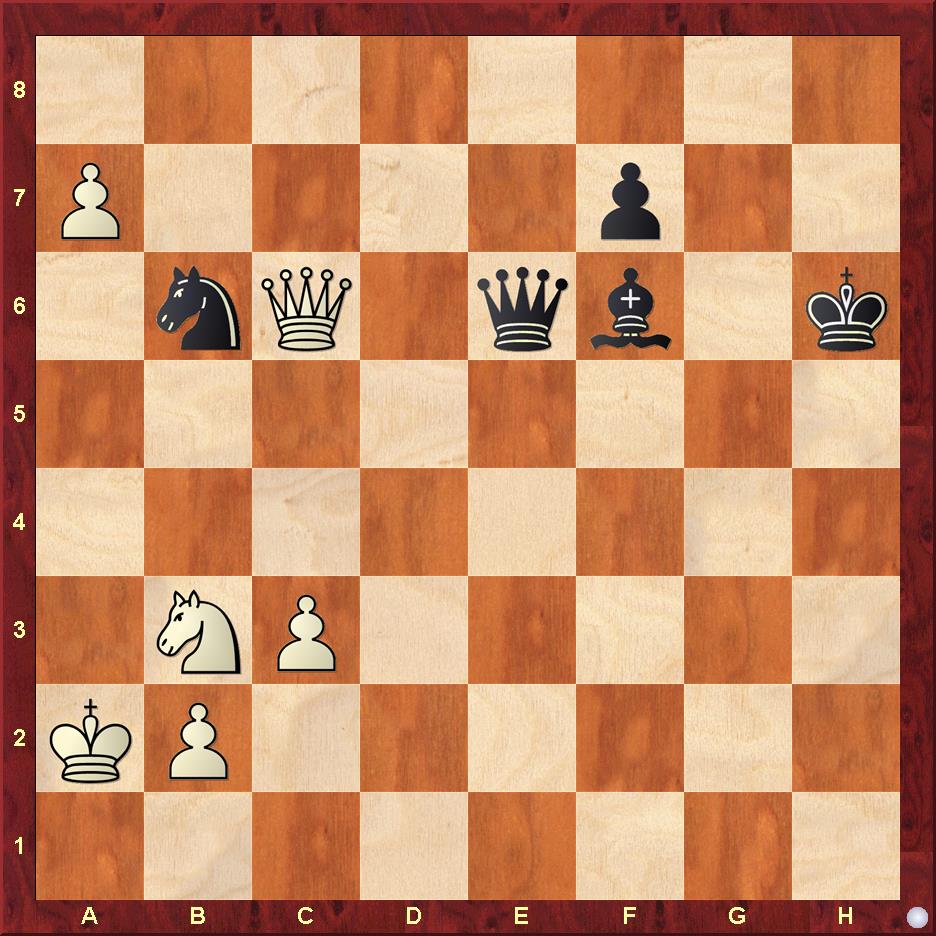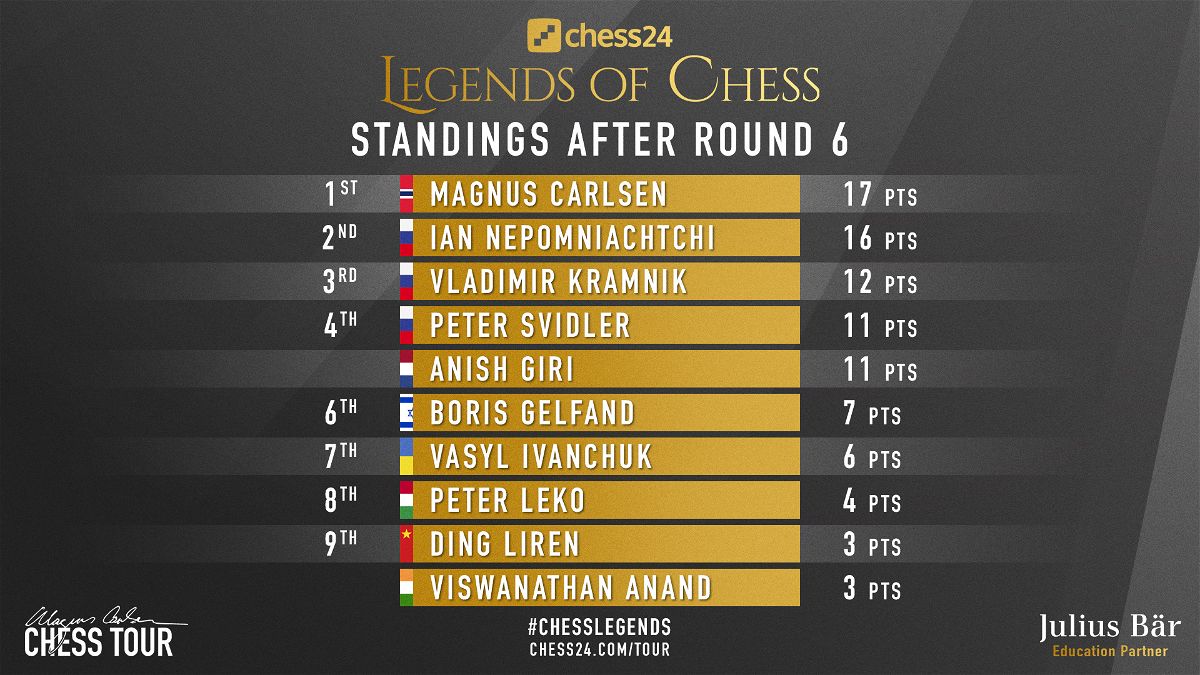Carlsen subdues Ding | Legends of Chess Round 6
With 3 rounds to go, it seems that the fight for first place is more or less a two horse race now. Magnus Carlsen started the day 4 hours ahead of the rest, as the champions' Fantasy Football commitments took priority later in the day, and managed to overpower Ding Liren to take over sole first. Nepomniachtchi needed an Armageddon and some luck to overcome Vishy Anand, who now seems out of qualifying contention. Peter Leko and Anish Giri played a fighting match with 3 decisive results, but the Dutchman scored 2 of those wins and stays in the hunt for a top 4 finish. Vladimir Kramnik should have lost the match against Gelfand in 3 games, but a combination of skill and will meant he equalised and took the Armageddon, taking sole third place in the process. Peter Svidler scraped past Ivanchuk to keep in touch with the top places, as the tournament heads for an exciting finish. Tanmay Srinath brings forth a thought-provoking report.
Carlsen 2.5-1.5 Ding:
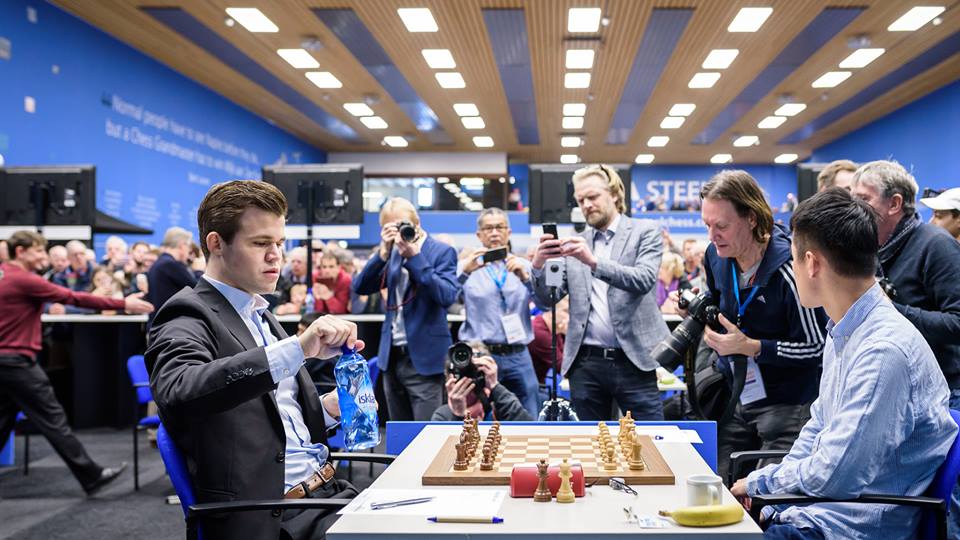
Magnus Carlsen has a lot of respect and admiration for Ding, hiring him as a second a few times and even resigning in 4 moves recently when Ding disconnected from one of their recent encounters. He has also lost some games to the great Chinese player in recent times, most notably last year at the Sinquefield Cup, so this win is very important for Magnus.
Let's dive straight into the decisive game (2) of the match:
Carlsen-Ding
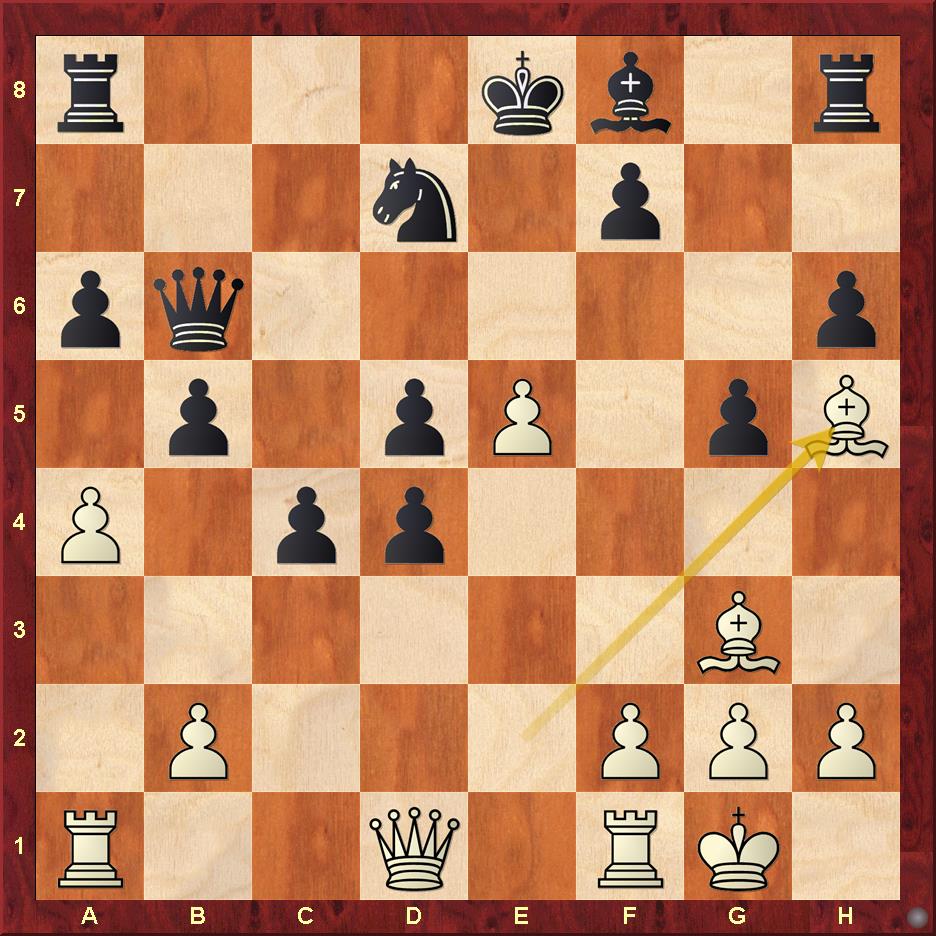
The 4th Game did feature a curious moment where Carlsen declined to play principled chess, but understandably so:
Carlsen-Ding
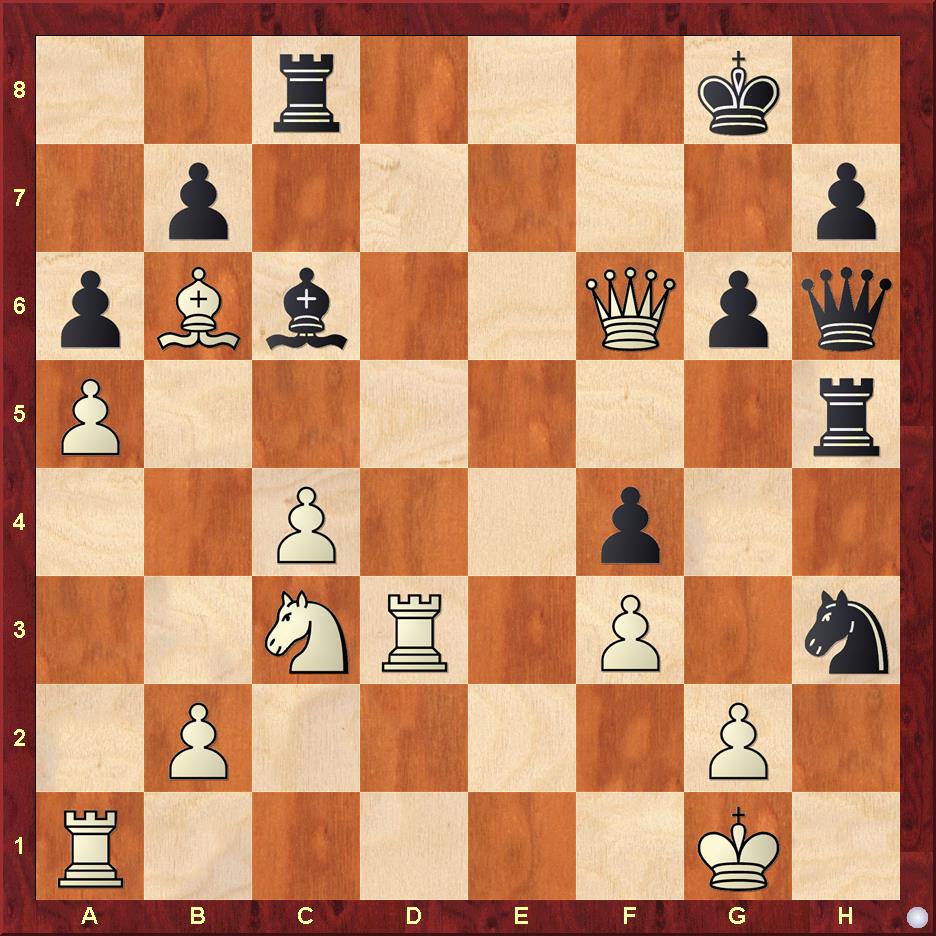
Now that we are done with the critical moments of the match, let us come to a very interesting opening decision by Ding:
Carlsen-Ding
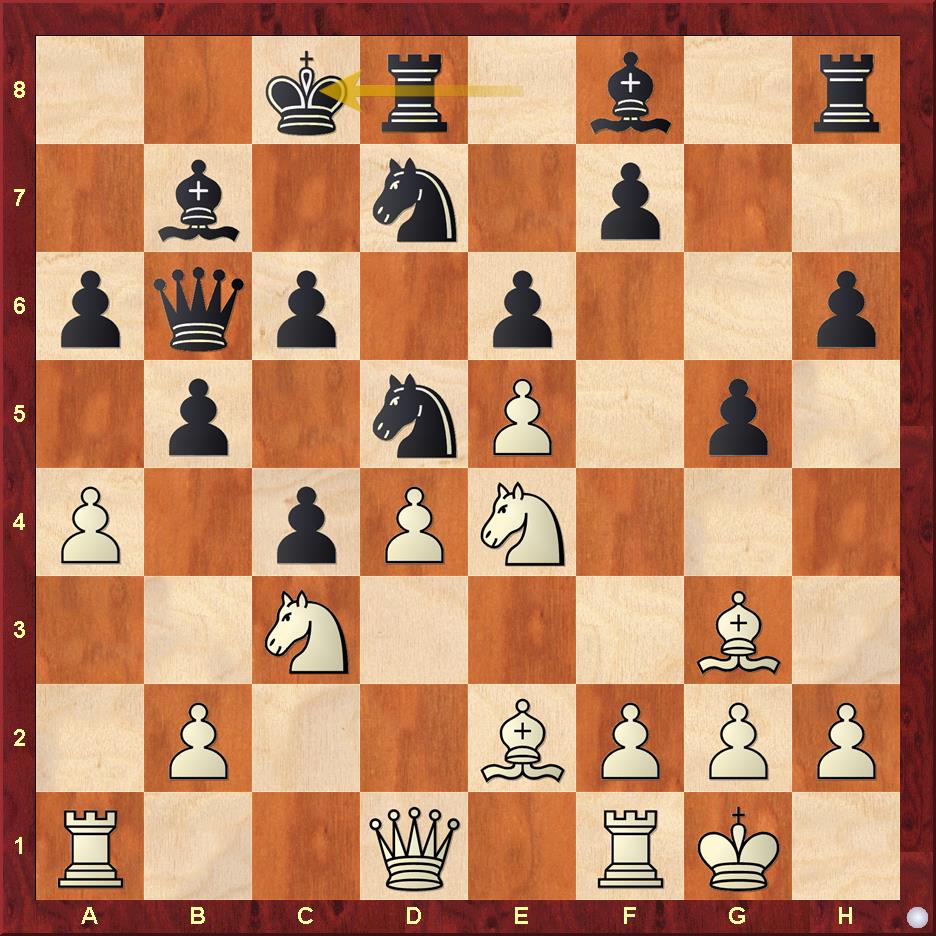
Seeing this as an opportunity to go deep, I analysed some lines, and the results I produced dizzy my mind even now! It has definitely improved my knowledge of this Anti Moscow Gambit, and I produce the fruits of my labour here:
White has many moves to make in this position, but only 4 of them are worth considering:

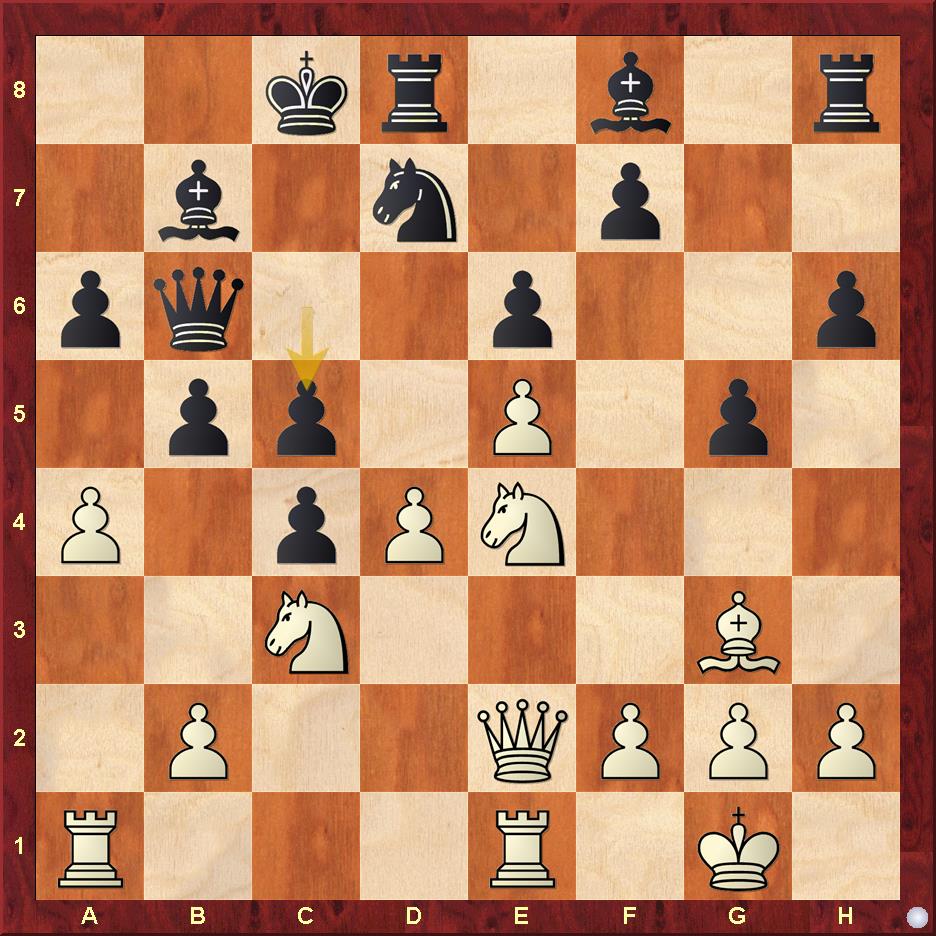
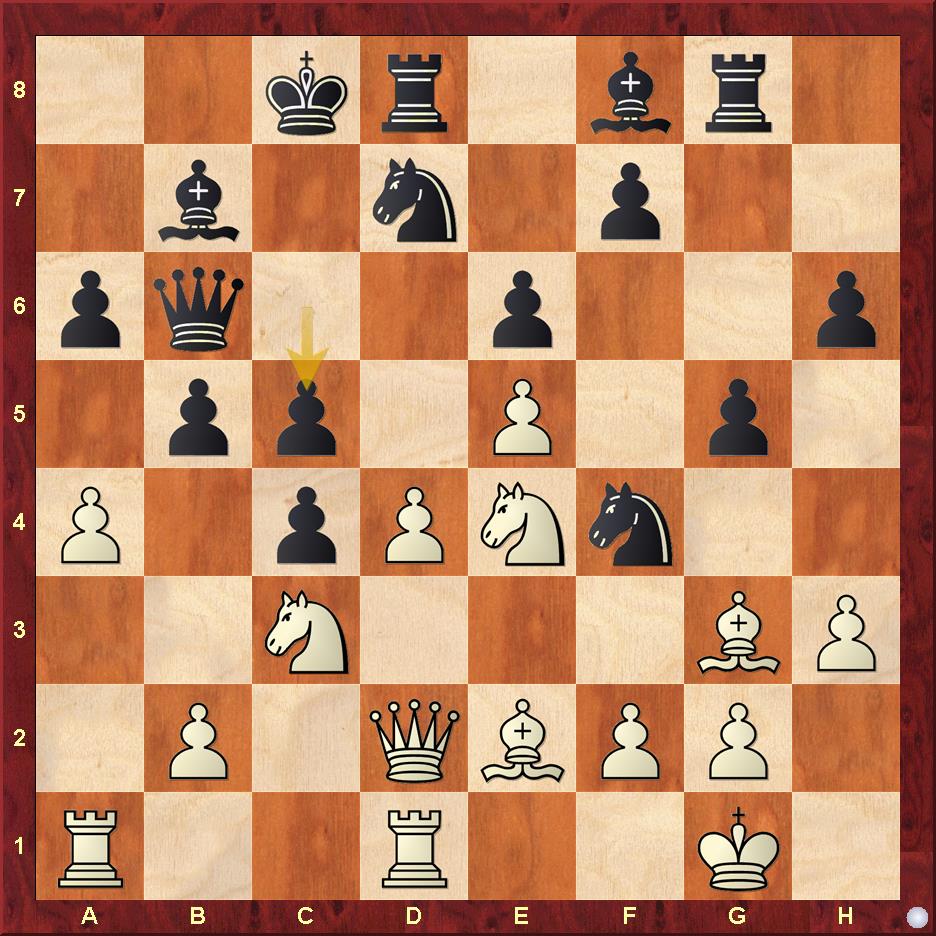
Based on positional factors, I came to the conclusion that the critical move after 14...0-0-0 is 15.b3!:
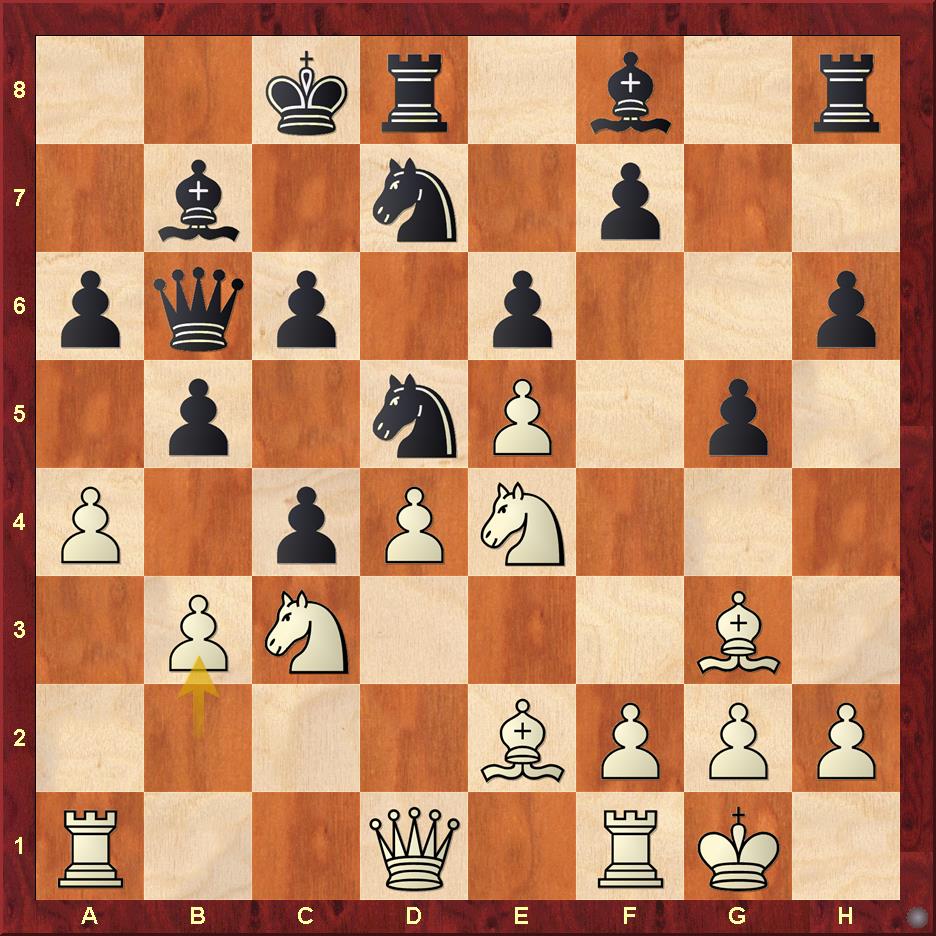
Since I want to keep the analysis objective, I did analyse some options for black in this position, and understood that he has only two moves not to give a large advantage to White. They are 15...b4!? and 15...Nxc3!. Based on the punctuation one can understand that one move keeps equal chances and the other gives a small advantage to White. Let us take the worse option first:
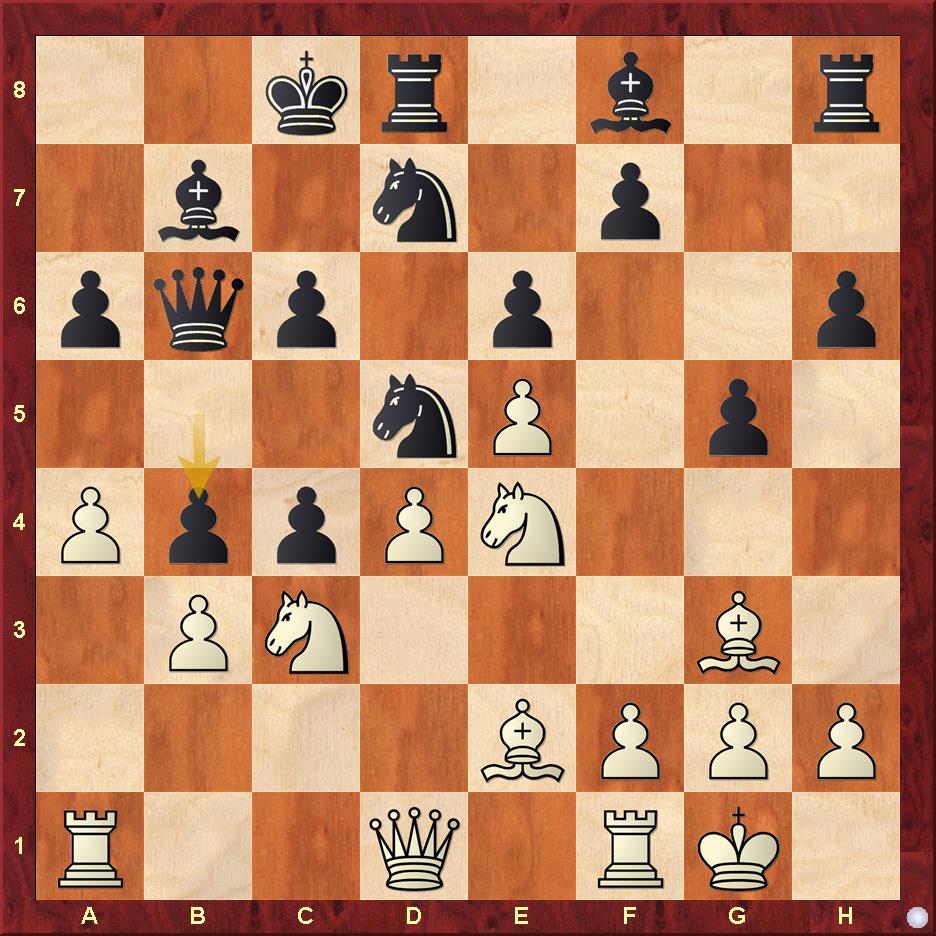
After 15...b4!? White has the following strong riposte - 16.a5! Nxc3! 17.Nxc3 Qa7 18.Na4 c3 18.Bh5!:
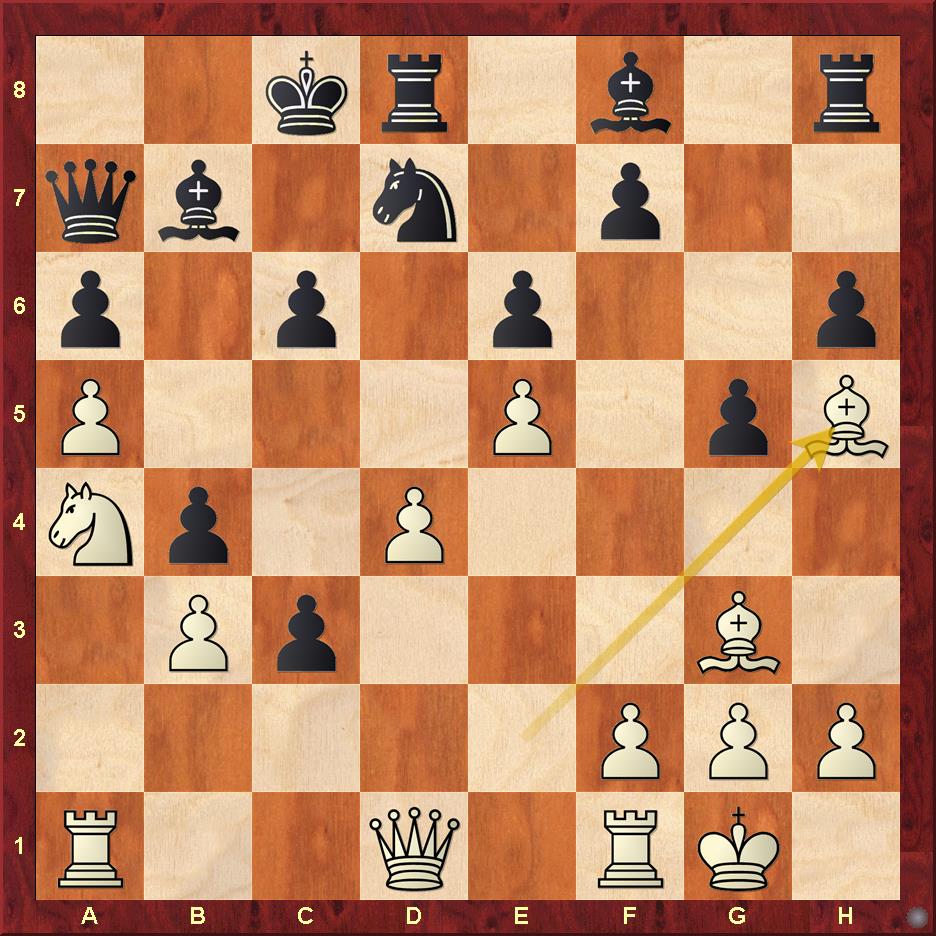
The only two moves that keeps a tenable position are 19...Rh7! and 19...Kb8!?. After Rh7 White has a route to an easy small plus, while after 19...Kb8!? he has to be inventive - 20.Bxh7! h5! 21.Bxe6! Nc5!(Otherwise Bxd7 is killing) and here the stunning queen sacrifice 22.dxc5!!:
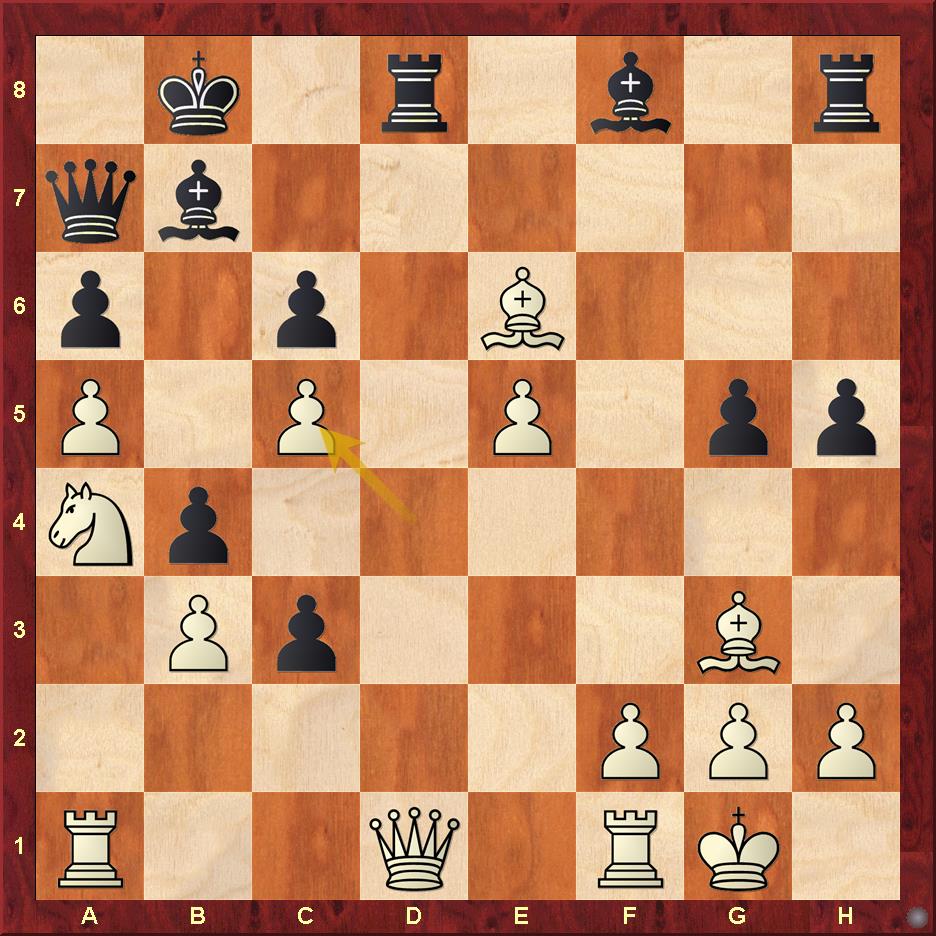
Thus the critical attempt for Black to prove his position is fine lies in the strong 15...Nxc3! 16.Nxc3:
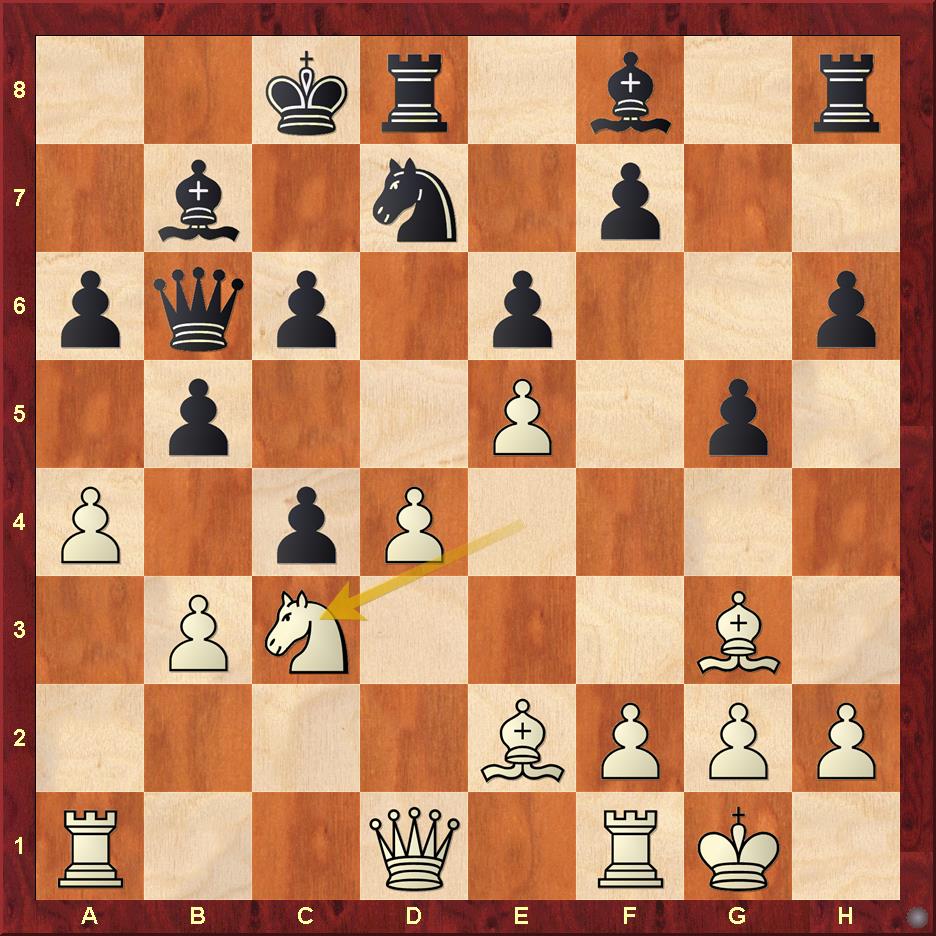
Instead, Black has to play the amazing piece retreat 16...Nb8!!:
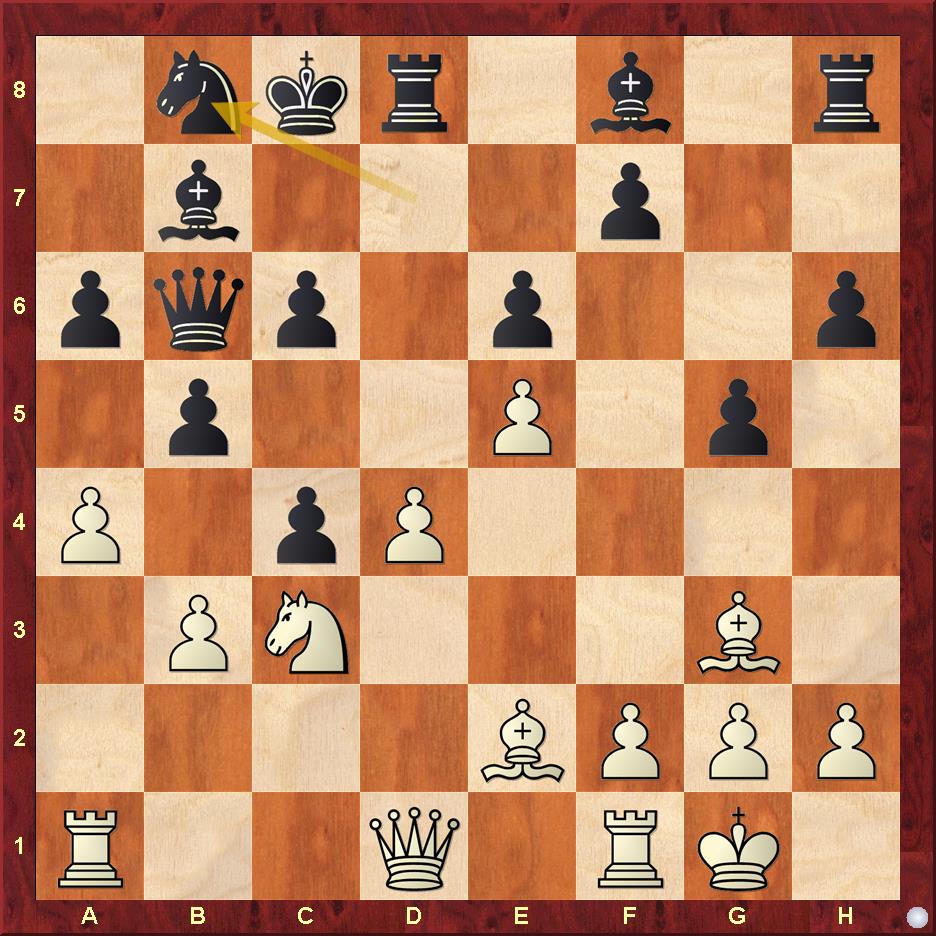
This is a move that can't be played unless you are seriously booked up. Now there follows a forced sequence - 17.axb5 cxb5! 18.bxc4 Rxd4! 19.Qc1 and now we have a small split:
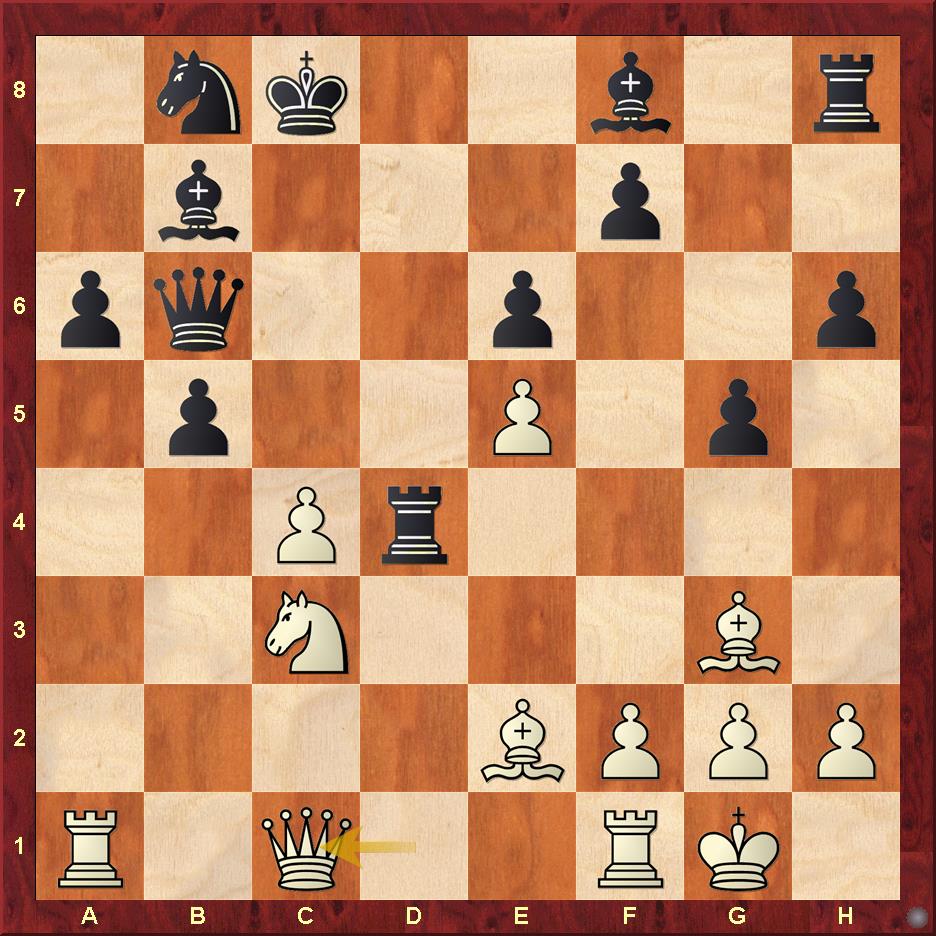
Black has three non-losing chances, out of which two keep equality and one concedes a large advantage to White. Let us investigate the more dangerous (for Black) 19...Qc6!? 20.f3! b4! 21.Bf2! Bc5 22.Nb5!!:
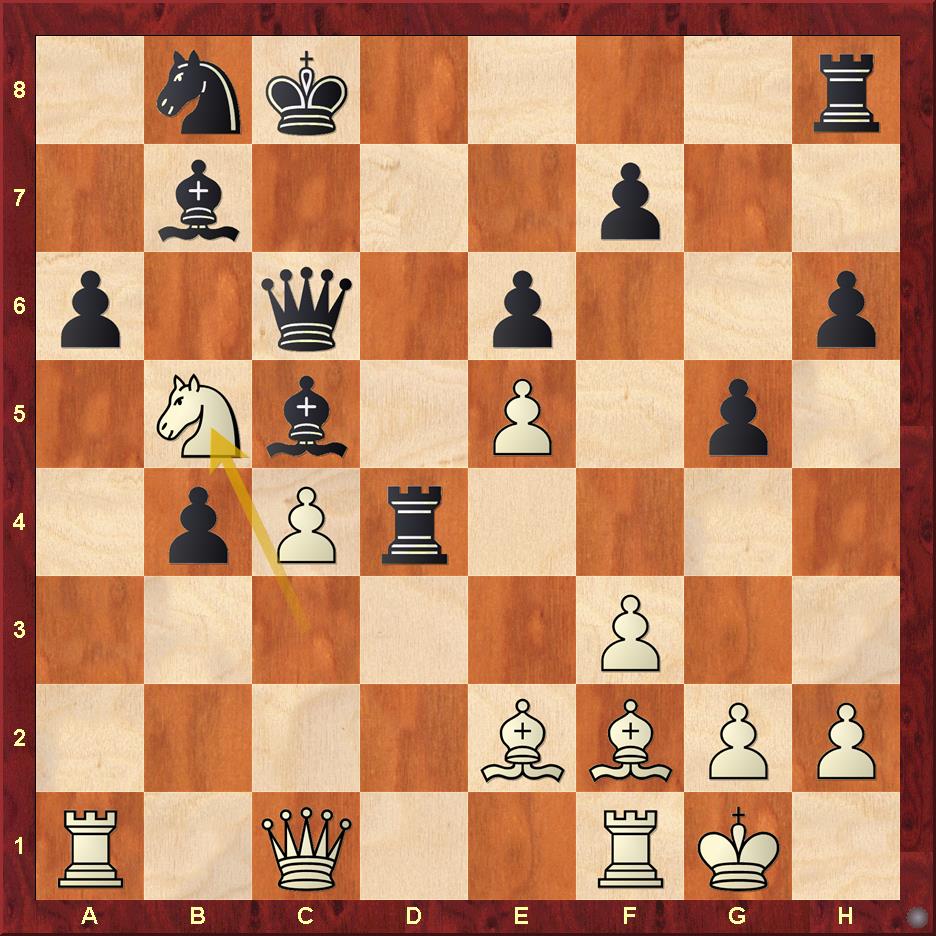
Instead of this risky variation, Black can instead go for the double edged but safer 19...b4! 20.Na4 Qd8 21.c5:
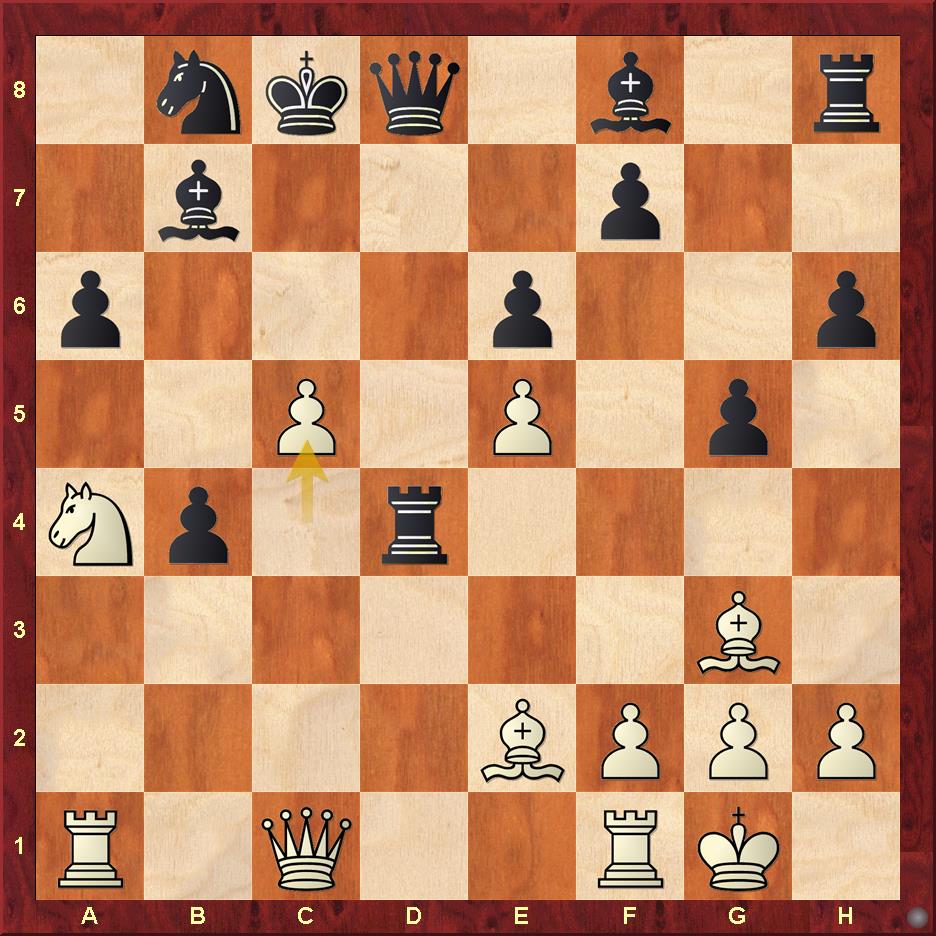
One can stop here if good compensation for the pawn is what he or she wants as White, but this being an objective investigation I decided to go till a point where I could estimate reasonably what the chances are for both sides.
Fat Fritz in this position showed a preference for the move 21...Bc6, but I am not satisfied with this move as White has a strong pawn sacrifice after 22.Nb6+ Kb7 23.Nc4!:
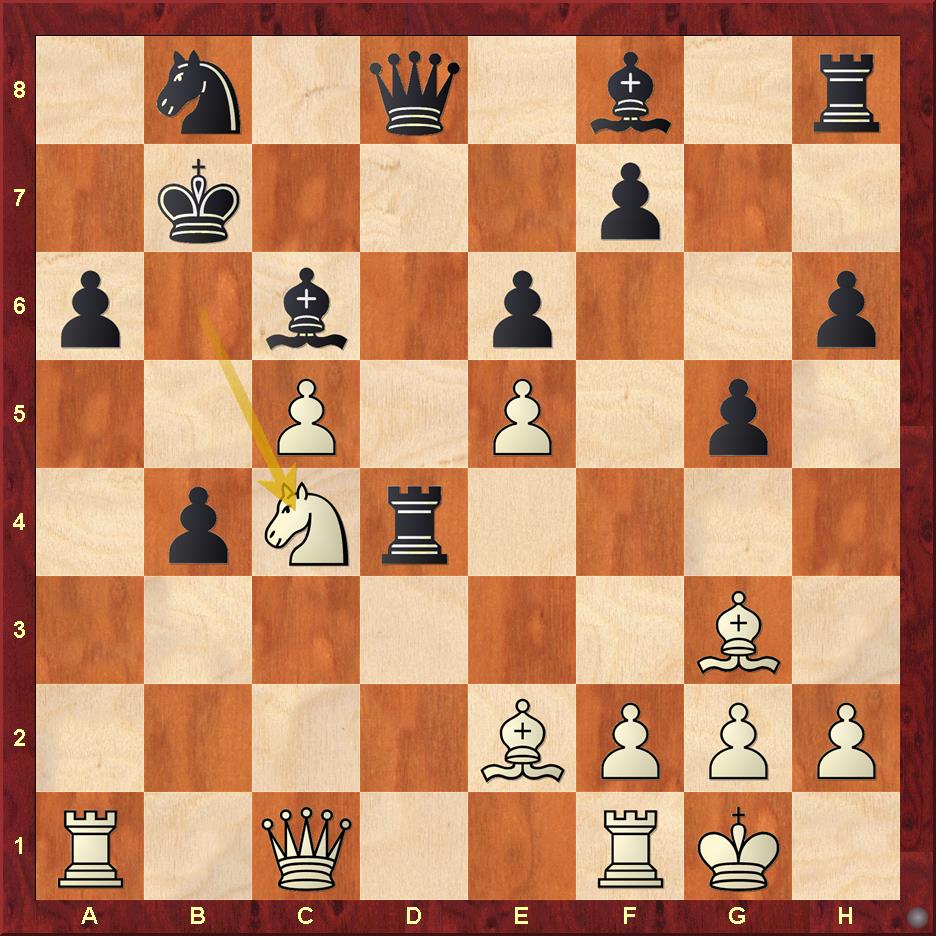
Things can't be practically playable if White has a time for such quiet moves into a line:
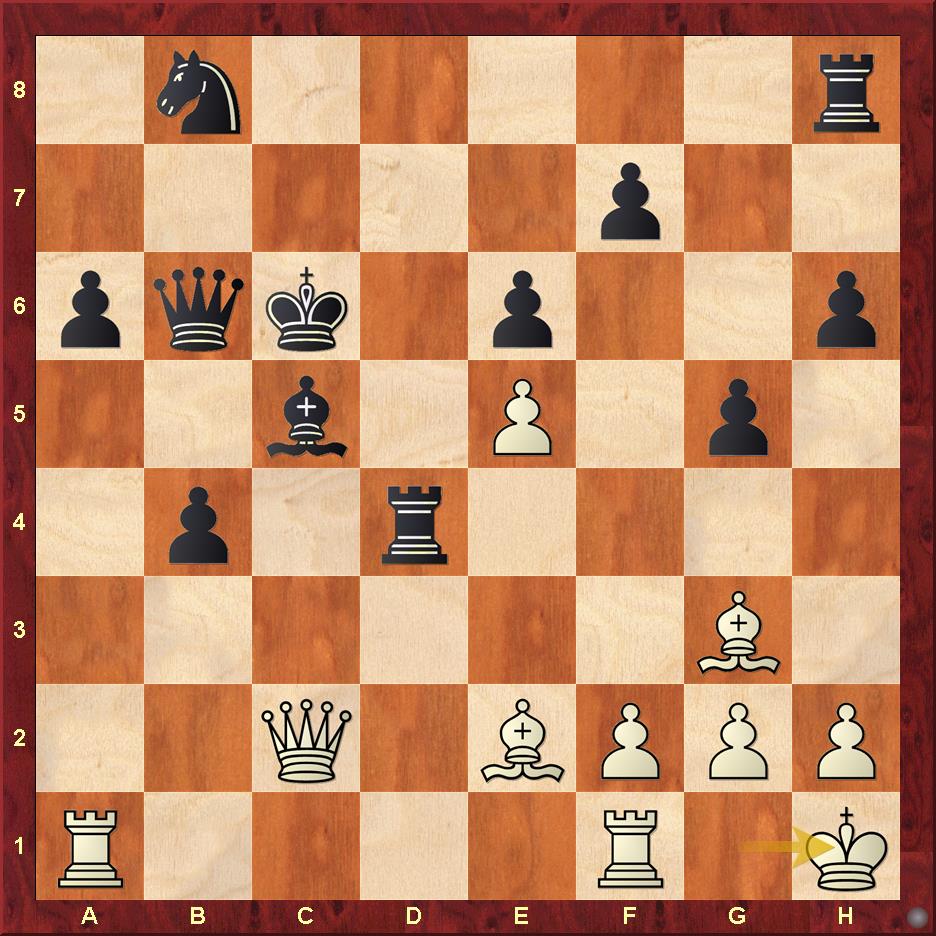
The second move I considered was 21...Be7, but here as well the rerouting of the knight to c4 seems to cause concrete problems - this is one of the critical positions for the evaluation of the line:
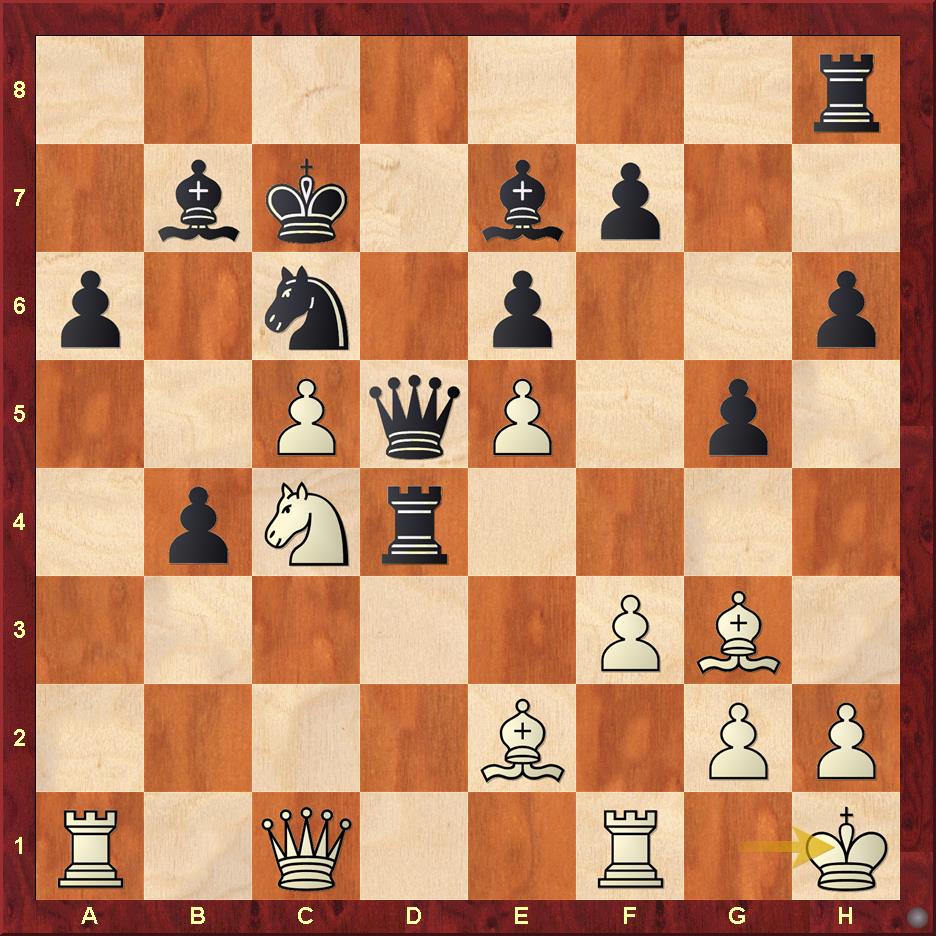
I should probably explain my reasons for giving a plus equals for the remaining two moves with two diagrams:
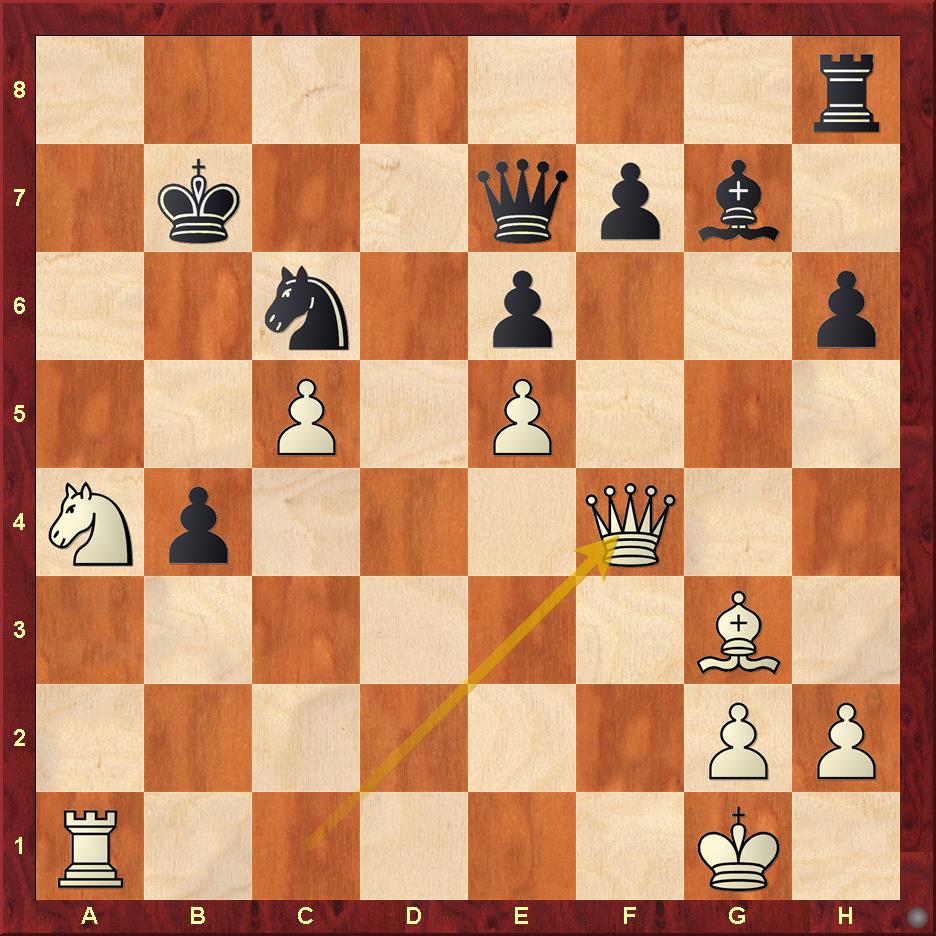
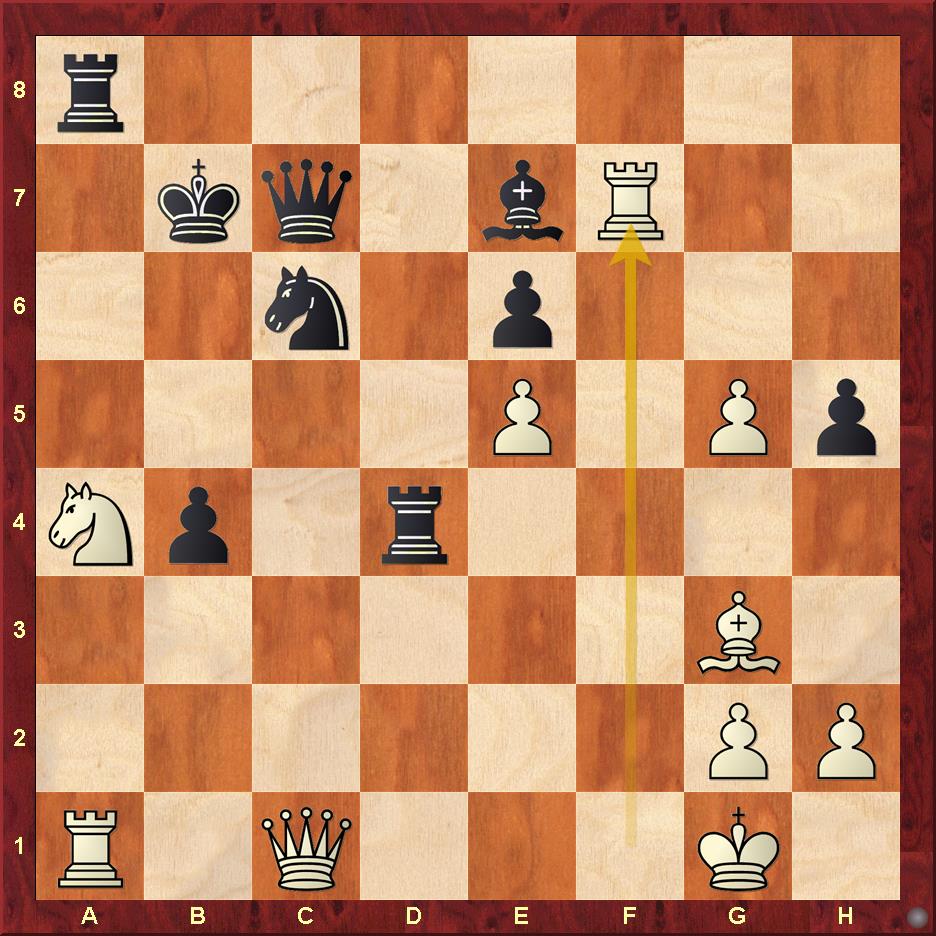
That leaves us with the move I consider strongest, 21...Rd2!:
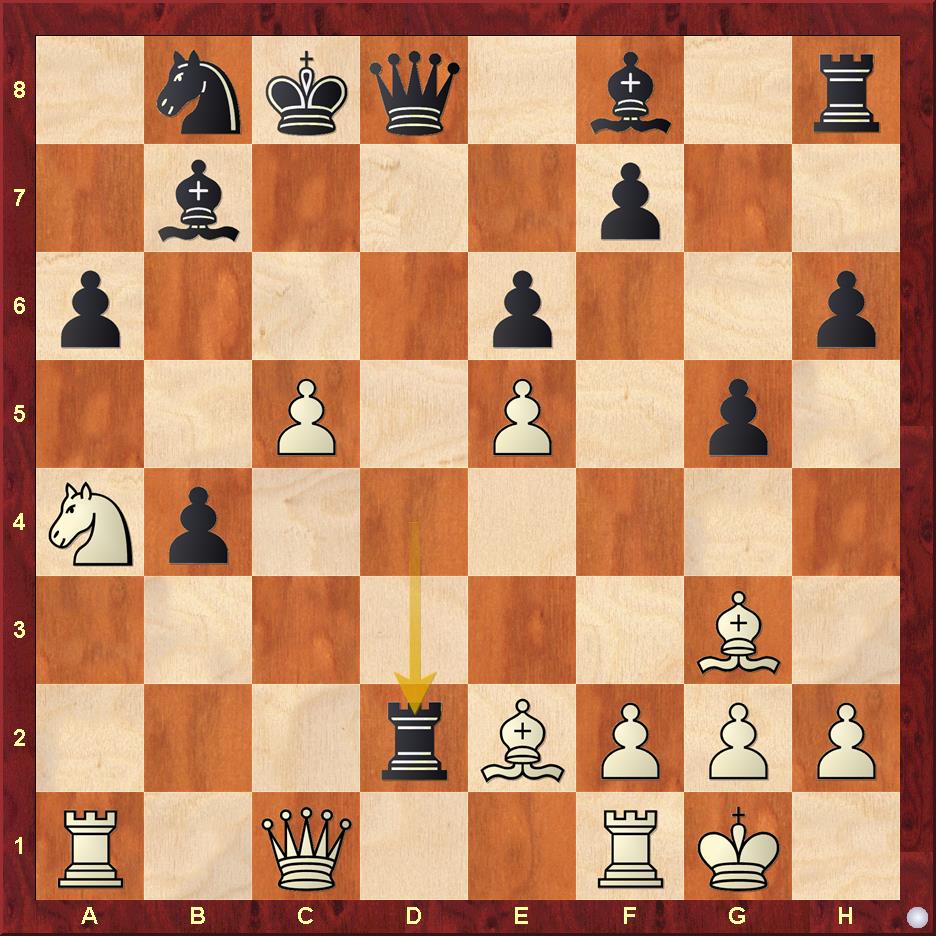
Before the readers get a headache due to all the complications, I will stop with the diagrams and attach my analysis here. My conclusion is that the move 14...0-0-0! may well be playable, and Black's strongest option. Yes Black has to defend sometimes, but White too has to play precisely to keep the initiative flowing. Overall a mesmerising option!
Giri 2.5-1.5 Leko:
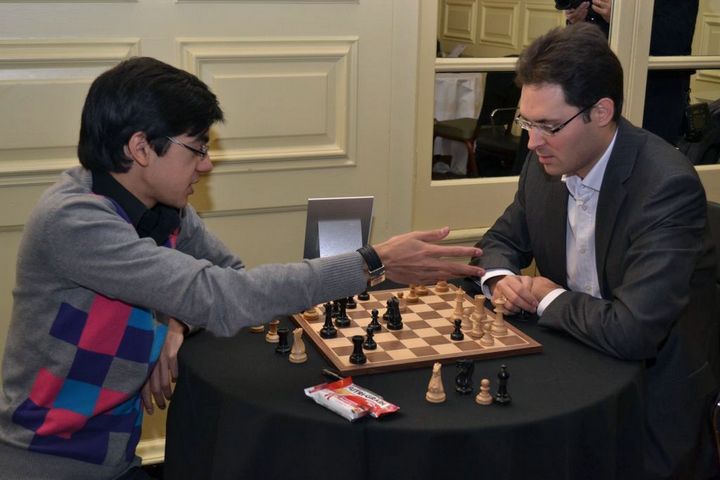
The only other match to be decided without an Armageddon. There were three White wins in this match, but fortunately for Anish he won with White in both his games, so he now ties with Peter Svidler on 11 points with 3 rounds to go.
Giri started the decisive game streak with a superb win in Game 2:
Giri-Leko
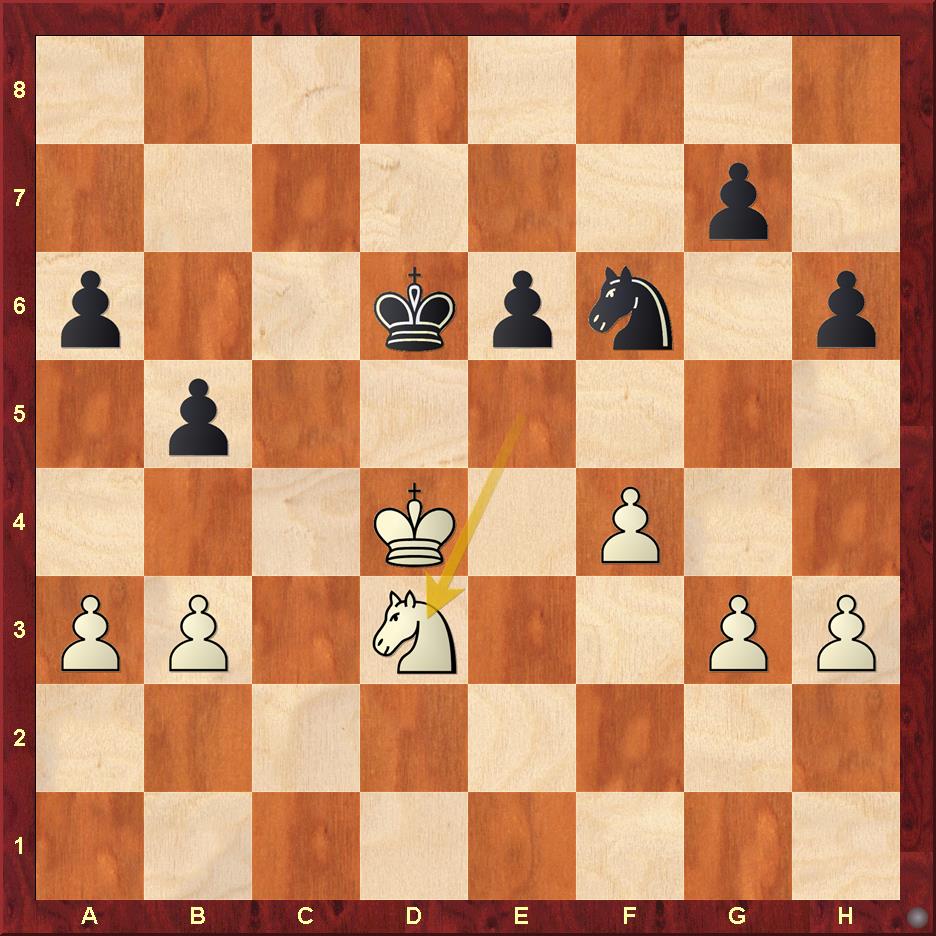
Leko struck back amazingly in the next game, playing such perfect chess that one was reminded of his peak years. Anish stood no chance:
Leko-Giri
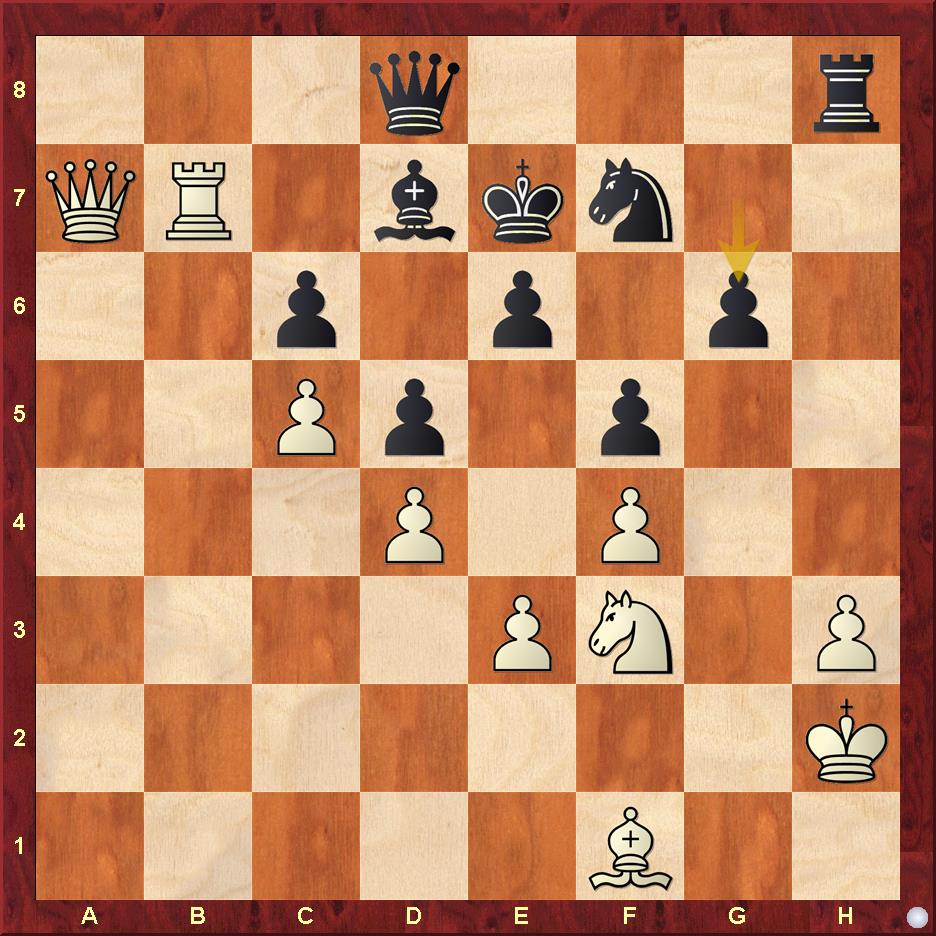
There was to be another twist however, as Anish punished Leko's pawn grabbing with ruthless precision:
Giri-Leko
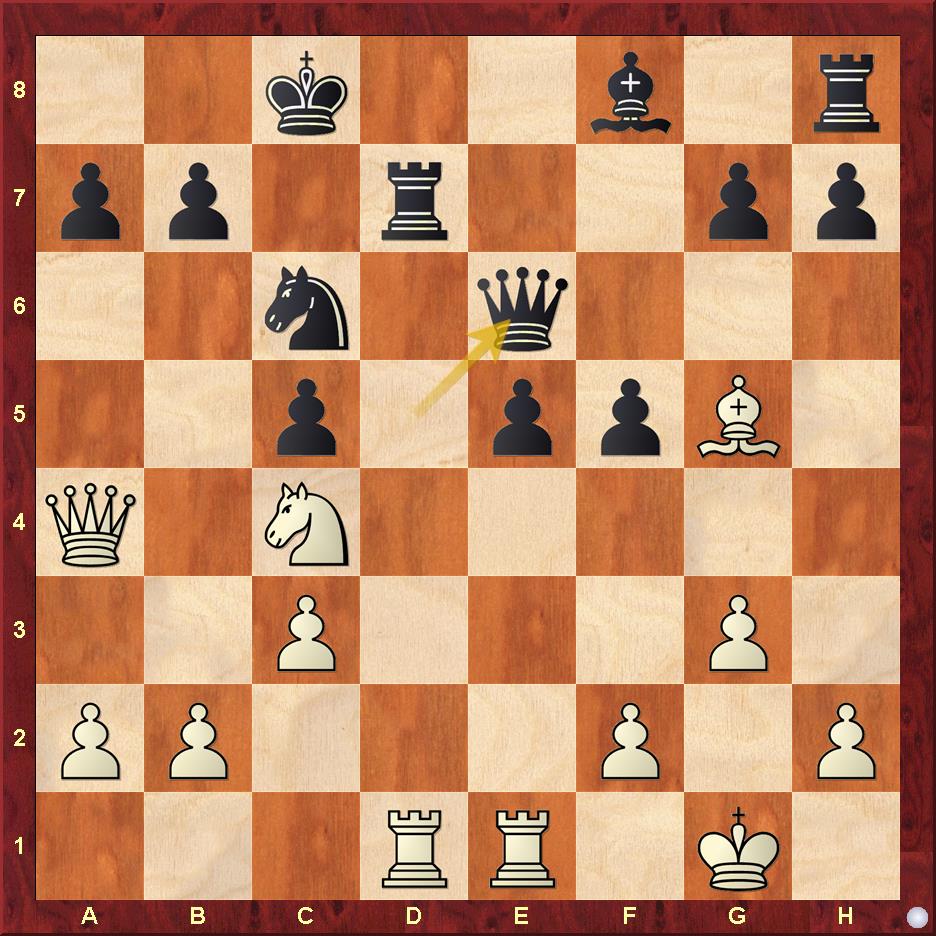
Nepo 2*-2 Anand (*-Won the Armageddon):
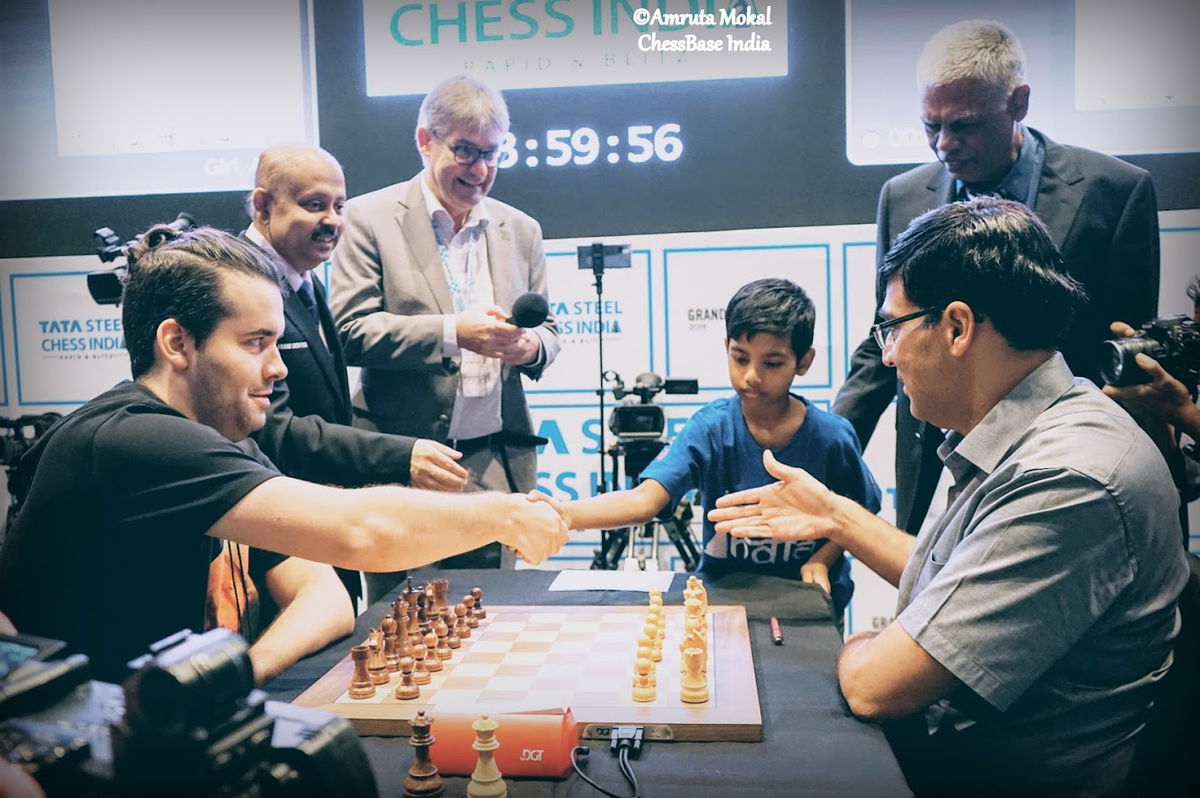
An Anand-Nepo clash is always looked forward to, as I personally feel that Nepo's playing style and speed is reminiscent of the peak Vishy(90s to early 2010s). Despite suffering a crushing 17 move defeat in the Nations Cup recently, Nepo remained unflustered in this match, and recovered from a shocking loss as White to take the Armageddon in some style! Let's have a look some decisive moments:
Nepo-Anand
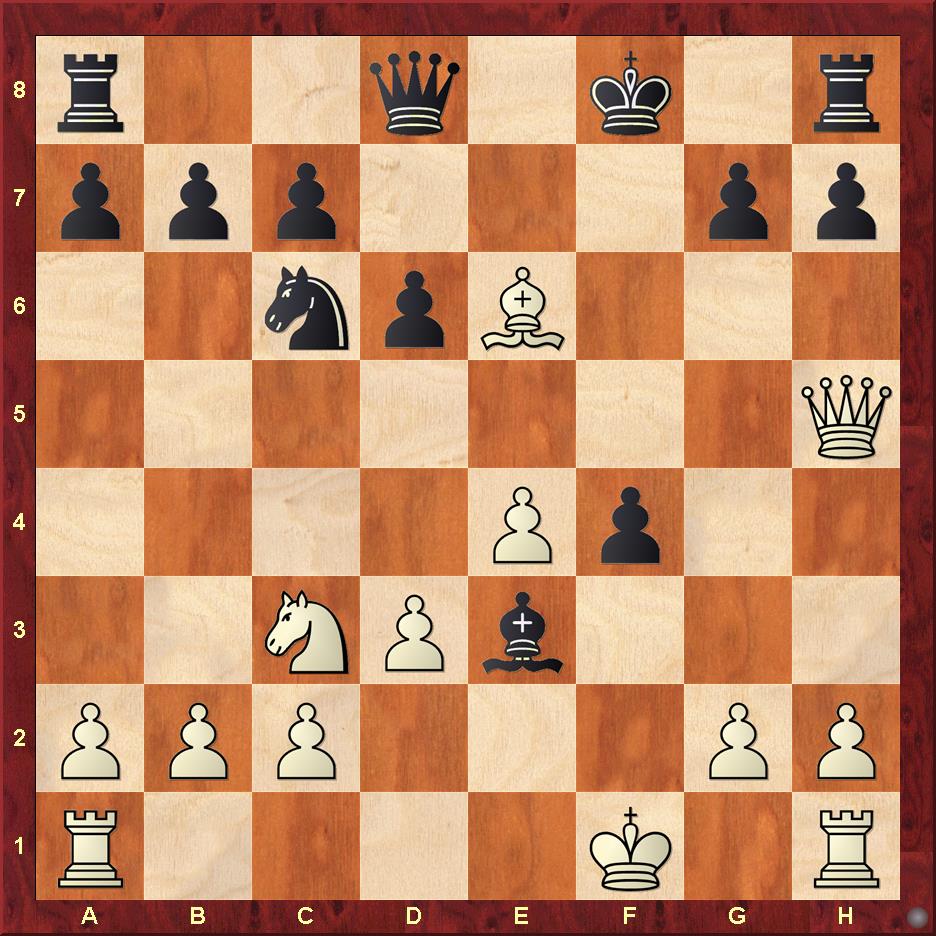
An under-pressure Anand had to win in Game 4 to tie the scores and take the match to Armageddon, and win he did!
Nepo-Anand
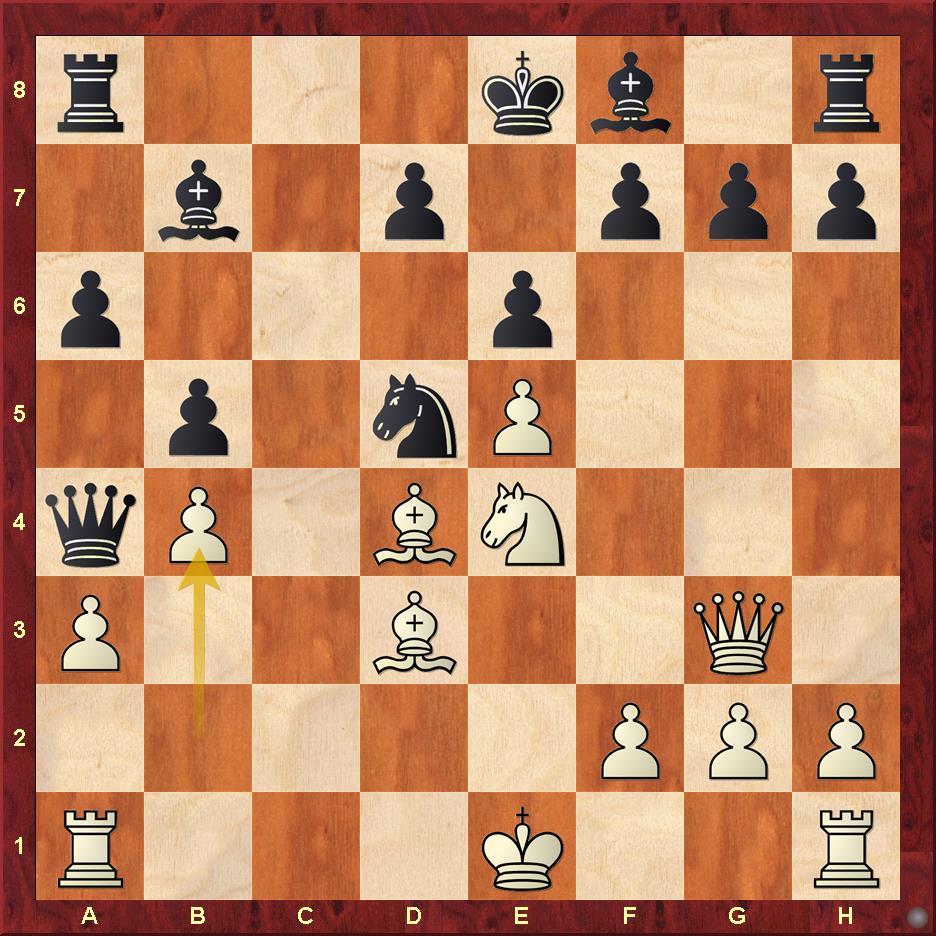
Nepo's strategy of playing a long game in the Armageddon paid off, as with a minute less Vishy was left with too many problems to solve:
Nepo-Anand
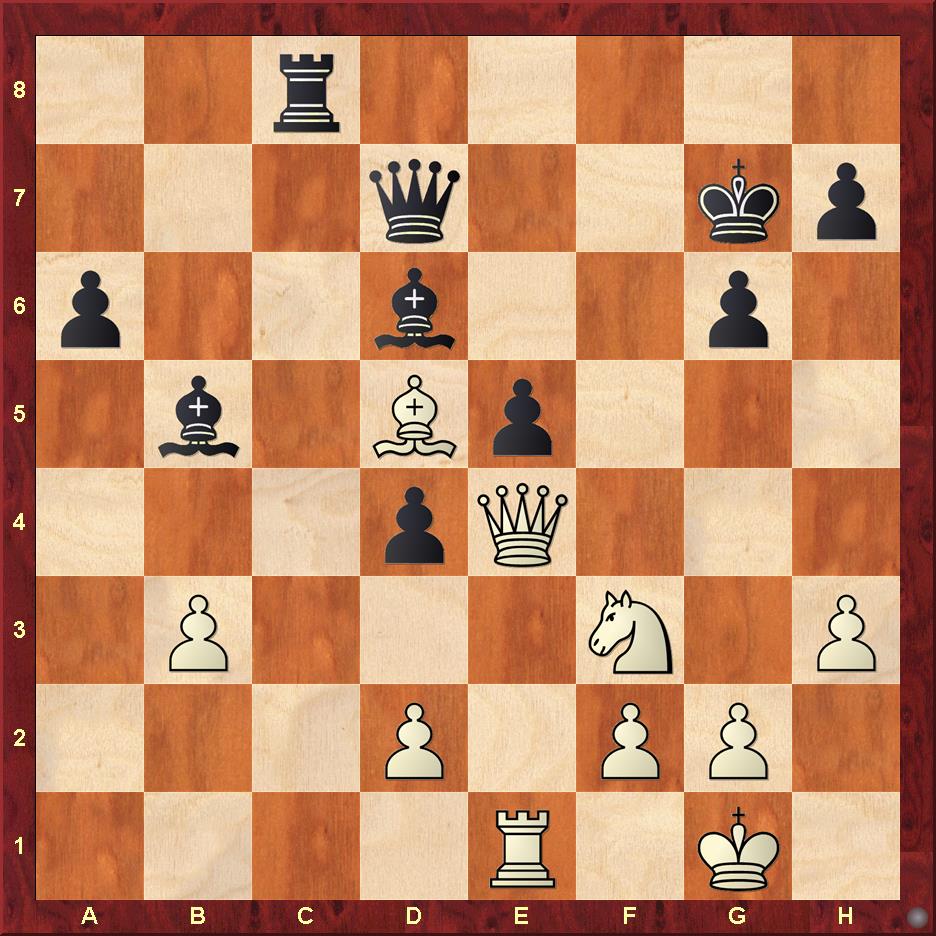
Kramnik 2*-2 Gelfand (*-Won the Armageddon):
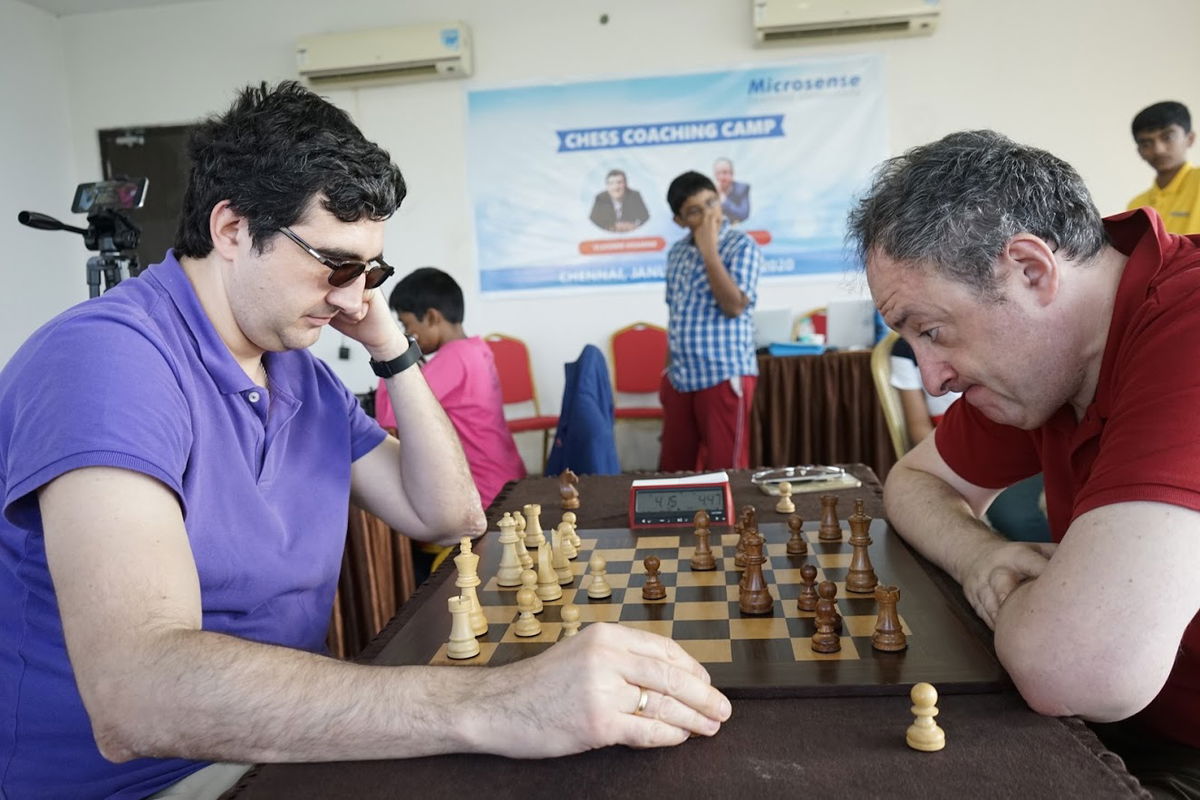
Boris Gelfand has been playing fantastic chess in this tournament, but at critical junctures his technique has let him down. Here are some critical moments from this match:
Game 1 went beautifully for Boris, as he managed to finish with a flourish:
Gelfand-Kramnik
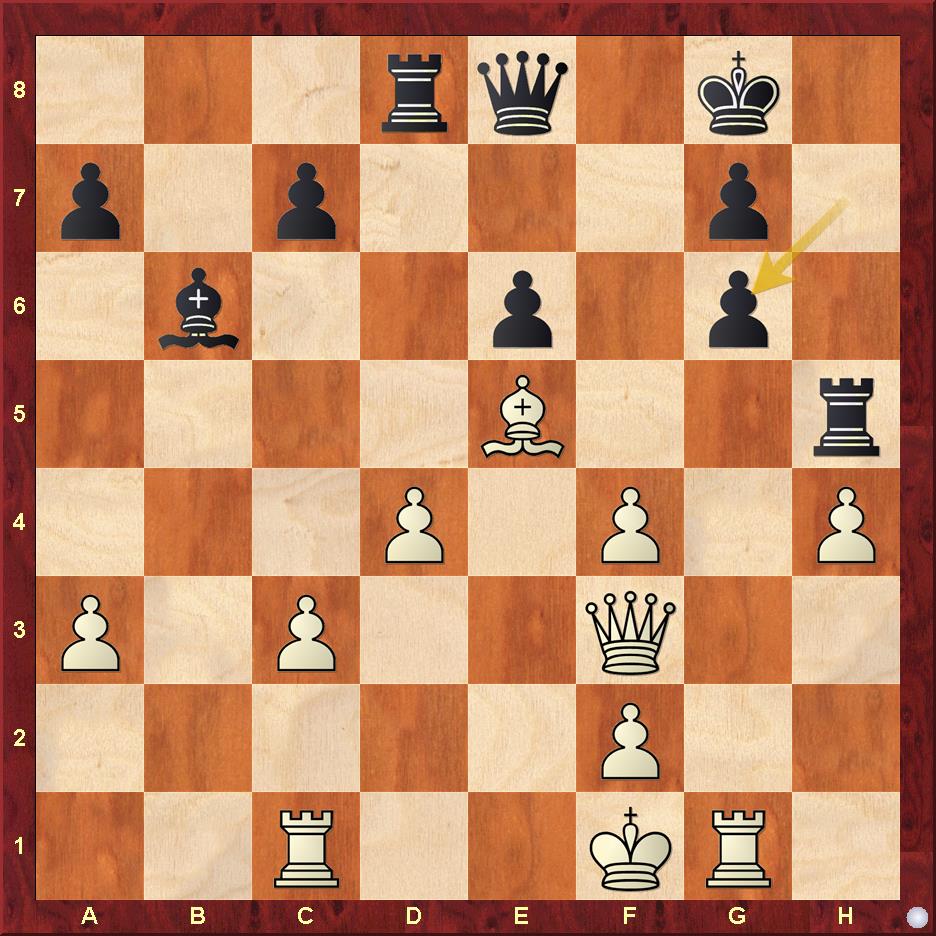
Game 3, the equaliser for the Kramnik, could have easily been 2.5-0.5 for Boris had he placed his king on the right square:
Gelfand-Kramnik
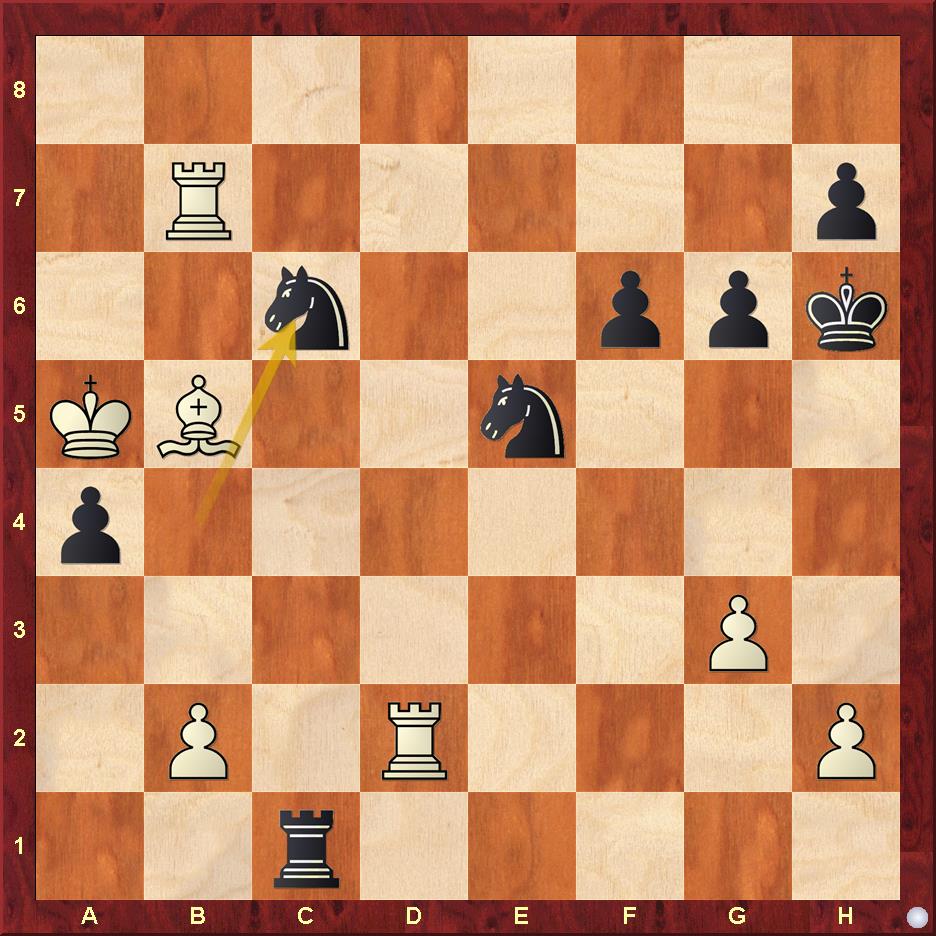
The Armageddon was surprisingly smooth for Big Vlad, who had the White pieces and played his favourite English/Reti and managed to pose enough problems to induce the following error:
Kramnik-Gelfand

Svidler 2*-2 Ivanchuk (*-Won the Armageddon):
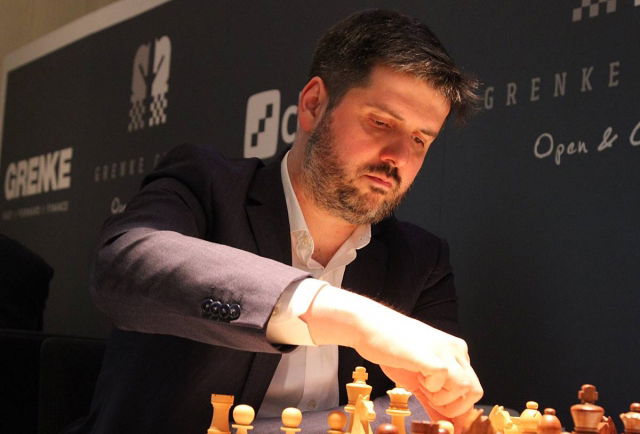
In a match of two of the biggest talents in the chess world Svidler triumphed after a huge scare, as Chucky was the better player for most parts of the match but as with other legends lacked the killer finish.
Game 1 was a crude blunder from Svidler, as he missed that his knight is dominated by the 2 bishops and captured:
Ivanchuk-Svidler
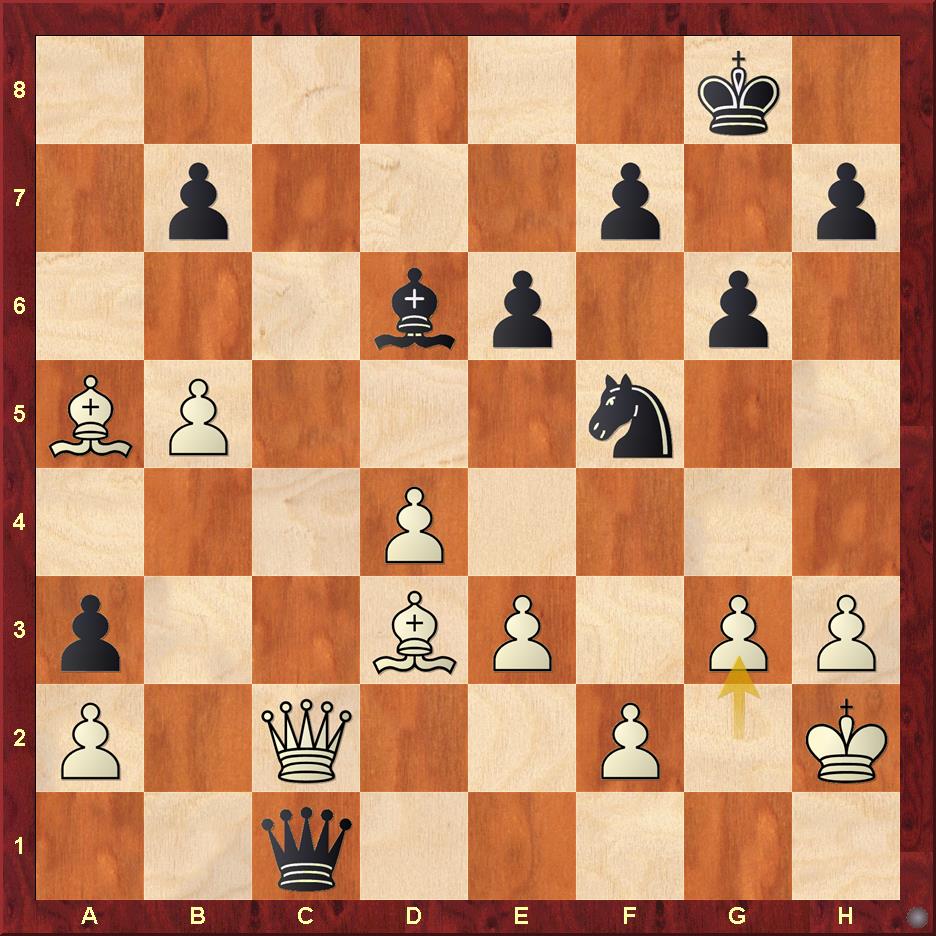
Game 2 saw Svidler on the brink of defeat, but he miraculously escaped and even won after Ivanchuk underestimated the side-effects of a certain inclusion:
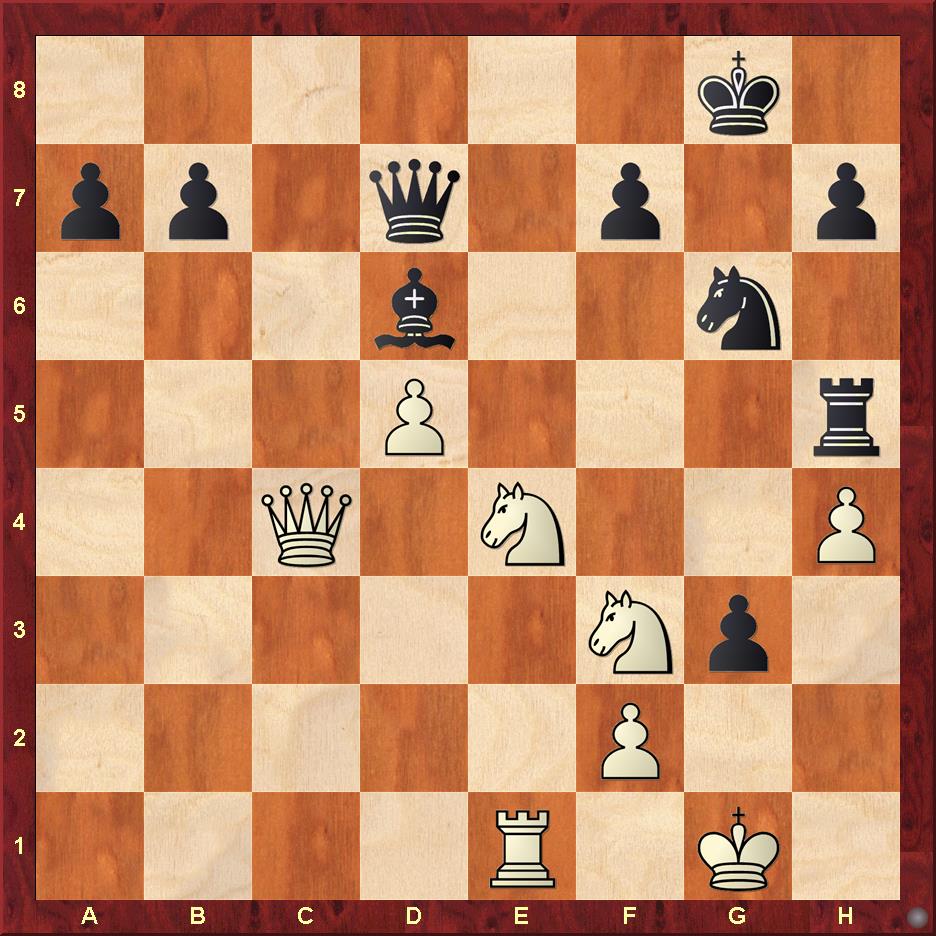
The Armageddon saw Svidler win on time in a better position, but had he been more accurate he would have won faster:
Svidler-Ivanchuk
